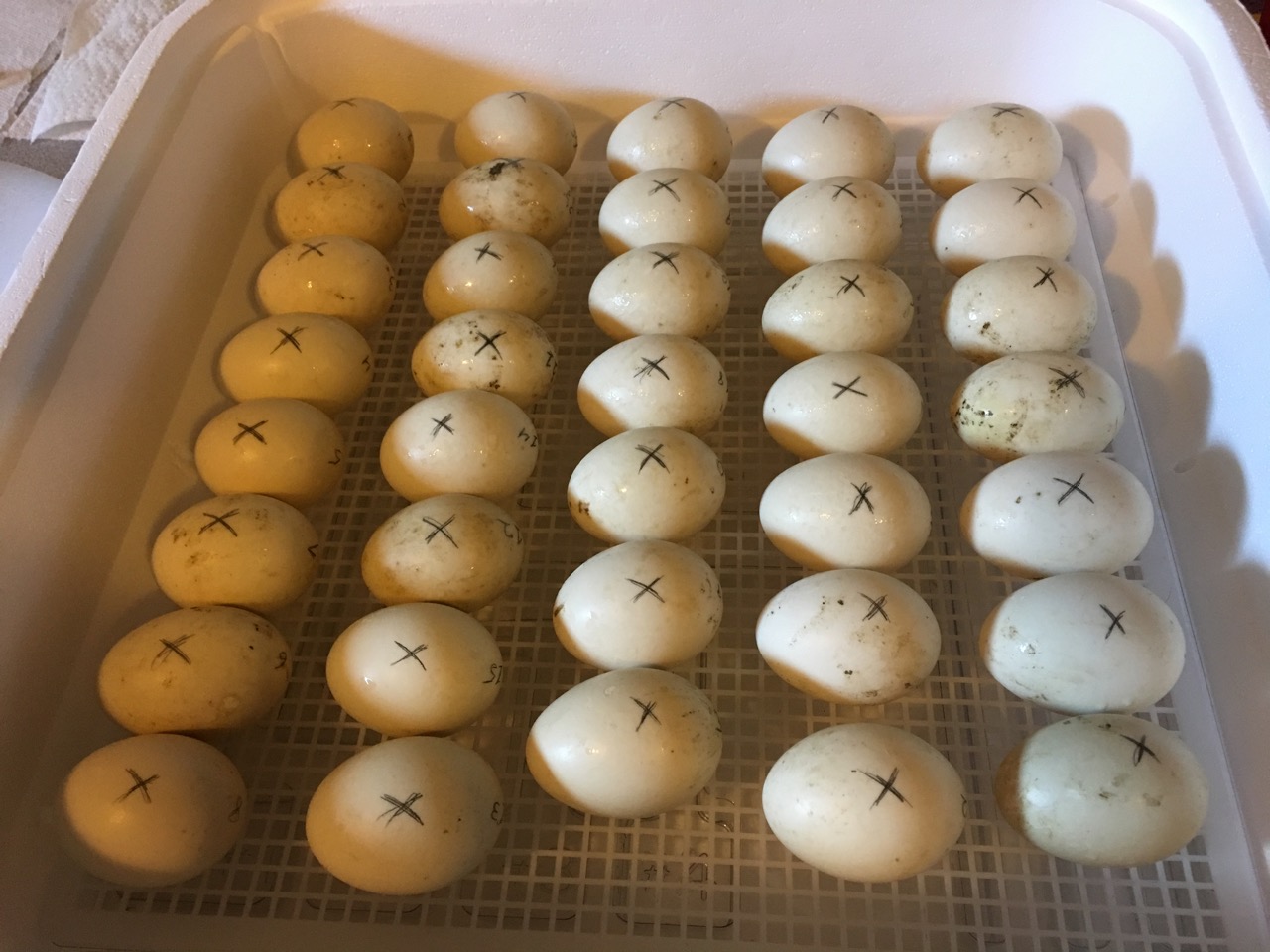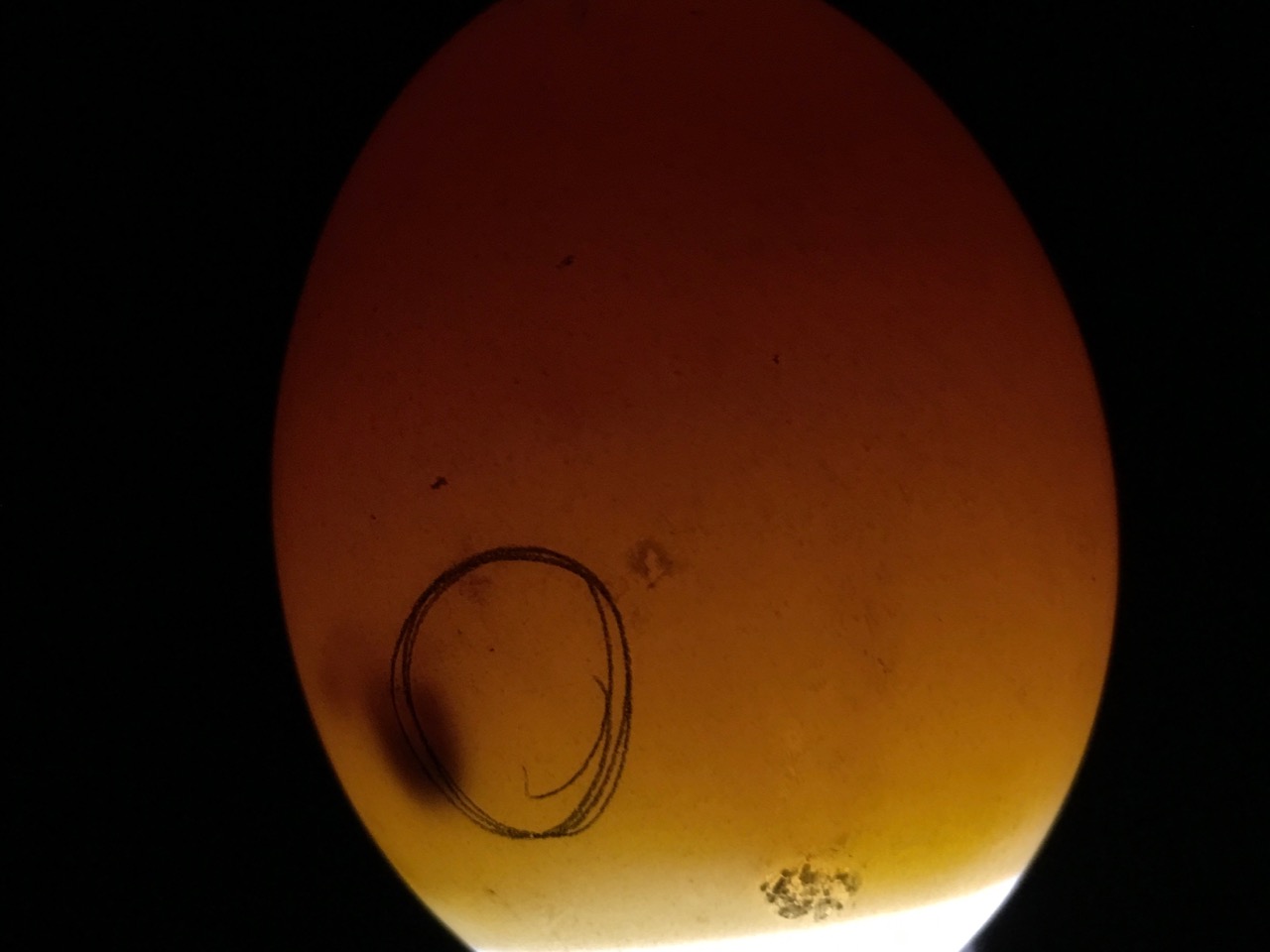
Last year’s spring and summer hatches of ducklings are now laying their own eggs, enthusiastically. With Spring upon us, it’s time to hatch some of those eggs. Chicken eggs, generally speaking, are very easy to hatch; Muscovy eggs require more maintenance and monitoring, but are worth the effort.
While it’s tempting to candle the eggs earlier, we begin candling to check Muscovy egg development at day 10. At this point, the viability of the egg can be determined with reasonable confidence: you should see the network of blood vessels and the embryo, and the embryo will probably react to the light by moving around. Any obvious “clears” – infertile or non-developing – are removed now, as are any where development has stopped (like a blood ring). It’s early enough in incubation that bad eggs shouldn’t have reached the point of exploding, but far enough along to allow you to see real development. Candling is fun and nerve-wracking at the same time: it’s easy to fumble an egg and even drop it as you’re trying to candle – and a dropped egg is most likely going to mean the end for that developing embryo. So far, we haven’t dropped any eggs, but the risk is ever-present.
In addition to hand-turning the eggs three times a day, they’re also misted and cooled daily. The misting and cooling mimics a broody’s behavior: a duck incubating the eggs would get off them periodically to eat/drink/poop/bathe and she would return, damp, to sit on the eggs again. We spray the eggs once a day with lukewarm water and allow them to cool for 5-15 minutes, depending on the stage of development.
Our first candling showed that every Muscovy egg was fertile. One had stopped developing and contained a blood ring (more information about blood rings here: http://www.raising-happy-chickens.com/candling-blood-ring.html). [We think it may have been damaged when, while hand turning the eggs, one of us (me) accidentally bumped the incubator, jostling the eggs. Yikes. Needless to say, care is being taken not to repeat that incident.] It’s exciting, though, to see the blood vessel development and the embryonic blob (including a beating heart) inside the egg. It slightly resembles a loosely woven spider web with a plump spider at the center. And it is truly amazing.

We did a (careful) second candling last night, a week after the first, to make sure development is still on track and to remove any eggs that have “quit”. If you fail to remove the quitters, you can have a rotten egg explode in your incubator – and as if the smell and mess wasn’t bad enough, the bacteria from the bad egg can potentially contaminate the good eggs remaining in there. We haven’t had any bad ones blow up in the incubator and we want to keep it that way. We removed two more eggs: the first had a black spot but appears to have quit very early on, and the second probably quit a few days ago. We typically perform eggtopsies on quitters to better understand what happened, cracking the eggs into a plastic baggie. It’s fortunate that we did; the second egg had a lot of unpleasant-looking goop in it and might have been smelly, if not sealed in the bag.

The next candling will be in another week. In the meantime, the eggs sit in their warm incubator, snug as bugs in rugs, listening to their classical music (and today, for a change of pace, smooth jazz). Just 18 more days to go…
